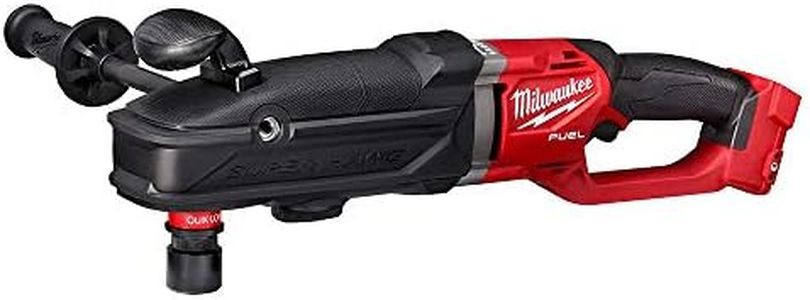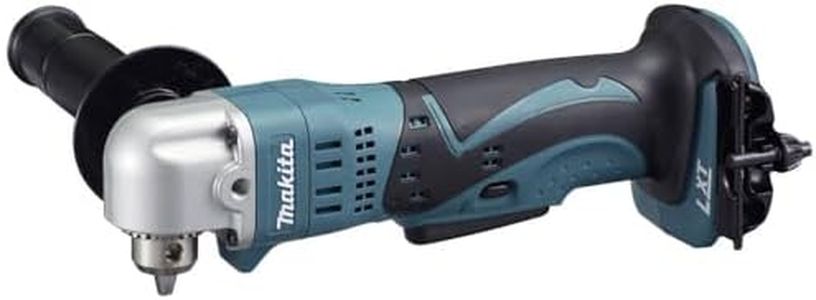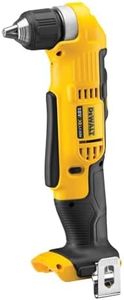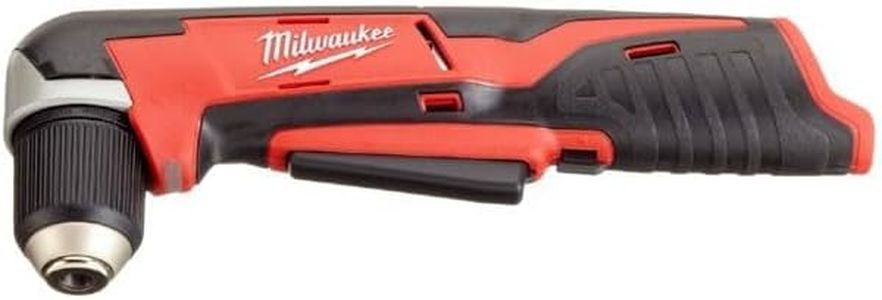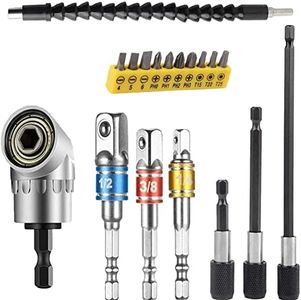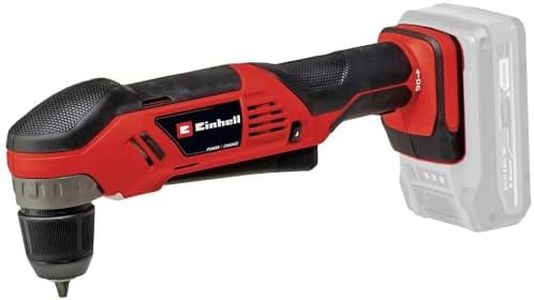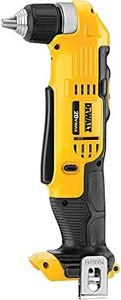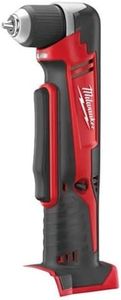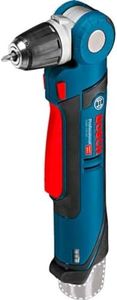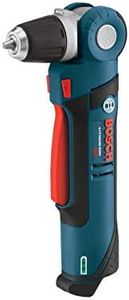We Use CookiesWe use cookies to enhance the security, performance,
functionality and for analytical and promotional activities. By continuing to browse this site you
are agreeing to our privacy policy
10 Best Right Angle Drills
From leading brands and best sellers available on the web.Buying Guide for the Best Right Angle Drills
When choosing a right-angle drill, it's important to think about how and where you'll be using it. Right-angle drills are especially useful for working in tight spaces where a standard drill won’t fit, like between floor joists, inside cabinets, or around plumbing and wiring. To pick the best one for your needs, you'll want to consider key specs that affect performance, usability, and comfort. Understanding these specifications will help you select a drill that matches the type of tasks you do most often.Power Source (Corded vs Cordless)The power source refers to whether the drill is powered by a cord plugged into an outlet or by a rechargeable battery. Corded right-angle drills offer consistent power and are great for prolonged or heavy-duty tasks since you won’t need to worry about battery life. However, they restrict mobility because of the cord. Cordless drills run on batteries, making them more versatile and portable. Battery-powered models are ideal if you need to move around a lot or work somewhere without easy access to outlets. Pick a corded drill if you expect longer sessions in a fixed place, and a cordless drill if flexibility and quick access are more important for your projects.
Size and Head LengthThe size and head length specify how compact the right-angle drill is, which matters for access in tight spaces. A shorter head lets you get into smaller, trickier areas, but may limit the size of bit or chuck you can use. Drills with longer heads might not fit everywhere but usually allow for more powerful motors. Think about the usual tightness of spaces you work in—if you're often drilling between studs or in cramped corners, look for the smallest head length available. If space isn’t as tight, a slightly larger drill may be more comfortable to use.
Chuck Size and TypeThe chuck size tells you the maximum diameter of drill bit the tool can hold, commonly available in 3/8 inch or 1/2 inch. Larger chucks fit bigger, more robust bits and are better for heavy-duty work. Smaller chucks suit lighter tasks and are often found on more compact models. Also, chucks may be keyless or require a chuck key to tighten; keyless chucks are quicker for frequent bit changes, while keyed chucks can offer a tighter grip. Choose a chuck size and type based on the types of holes you'll be drilling most often and how frequently you swap bits.
Speed (RPM) and TorqueSpeed, measured in rotations per minute (RPM), and torque, the twisting power, influence what kinds of materials the drill can handle. Higher speeds are better for drilling small holes in wood or metal, while higher torque is needed for driving screws or drilling large holes, especially in harder materials. Some drills offer adjustable speed settings, giving you more control. If you work mostly with soft materials, a mid-range speed and torque will suffice. For tougher tasks, look for a model with more torque and variable speed options so you can adapt to different materials.
Ergonomics and WeightErgonomics refers to how comfortable the drill is to hold and operate, including the shape of the handle and the balance of the tool. Weight is important because you'll often use a right-angle drill in awkward positions; a lighter tool reduces fatigue during extended use. Try to pick a model that feels good in your hand and isn’t too heavy, especially if you need to use it overhead or for long periods. Comfort can make a big difference if you work on a lot of projects.
